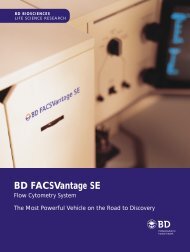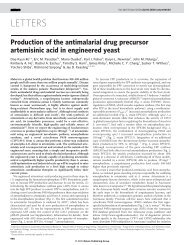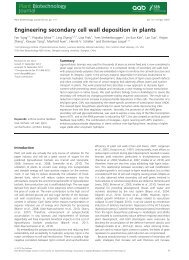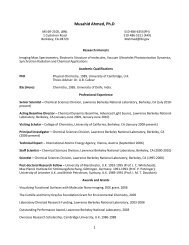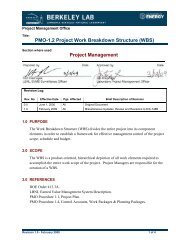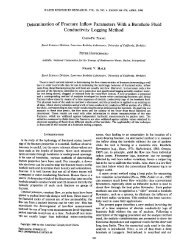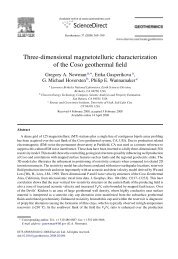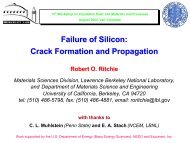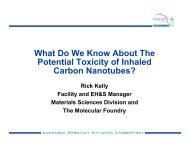LBNL Respiratory Protection Program - Lawrence Berkeley National ...
LBNL Respiratory Protection Program - Lawrence Berkeley National ...
LBNL Respiratory Protection Program - Lawrence Berkeley National ...
Create successful ePaper yourself
Turn your PDF publications into a flip-book with our unique Google optimized e-Paper software.
around the sides of the mask is not filtered at all. The effectiveness of this mask is also<br />
compromised when it is worn by an employee with facial hair that interferes with the face to<br />
facepiece seal. Like other air purifying respirators, filtering facepieces offer no protection against<br />
oxygen deficient atmospheres, gases or organic vapors. Other air purifying respirators can protect<br />
workers from organic vapors and other gases with appropriate cartridges.<br />
Applications: Low concentrations of nuisance dusts such as pollen, gypsum dry wall, sawdust,<br />
and animal dust. Under some circumstances, these may also be utilized for protection from<br />
Aerosol Transmissible Diseases. These masks may also be worn voluntarily when it is desirable to<br />
protect processes (clean rooms), rather than the individual wearing the mask. Groups who use the<br />
filtering facepiece respirator for voluntary protection from nuisance dust include the Facilities<br />
Division’s Carpenters, Custodians, Labor Shop, Plant Maintenance Technicians, and Plumbers; the<br />
Engineering Division’s Electronics and Instrumentation and Mechanical Engineering employees;<br />
the IT Division’s Archivists; and employees who have expressed concern about seasonal allergies.<br />
Assigned <strong>Protection</strong> Factor: 1 <strong>LBNL</strong> does not issue filtering facepiece respirators for<br />
environments where a hazard is found to be present. Since these masks are not issued to protect<br />
from a hazard, and are not fit-tested, they are not assigned a protection factor higher than one. The<br />
only exception is when they are used for protection from airborne biological agents, as part of the<br />
full respiratory protection program that includes medical qualification and fit testing.<br />
C. Negative Pressure Air-Purifying Half-Mask Respirators<br />
Description: The half-mask facepiece has a silicone or other rubber face seal which fits over the<br />
nose and under the wearer's chin. The half-mask air-purifying respirators normally used at <strong>LBNL</strong><br />
are negative pressure respirators.<br />
This respirator is fitted with filters or cartridges that purify the air as the wearer breathes. Colorcoded<br />
cartridges and filters are available for a variety of air contaminants. The most common<br />
cartridge and filter colors are described in Appendix F.<br />
Advantages: These respirators can provide a better seal than the filtering facepiece respirators.<br />
Because the filters and cartridges can be changed easily, the respirator can be re-used, and can be<br />
used to protect from a variety of contaminants. Prescription eyewear and safety glasses can usually<br />
be worn with the half-mask respirator without compromising the fit. Half-mask respirators are<br />
relatively comfortable, and are the most commonly selected type of air-purifying respirator.<br />
Limitations: Air-purifying respirators cannot be used for all types of air contaminants, including<br />
contaminants whose concentration cannot be reliably estimated, those for which a suitable<br />
cartridge is not available, or in oxygen deficient atmospheres. They cannot be used where facial<br />
hair interrupts the facial sealing surface. They do not protect the eyes from irritating contaminants.<br />
Applications: Groups who use the half mask respirator include the Facilities Division’s<br />
Carpenters (wood dust, some organic vapors from cabinetry work), Labor Shop (various<br />
contaminants depending on work needs, including organic vapors, mercury, and crystalline silica),<br />
Plant Maintenance Technicians (asbestos), Plumbers (asbestos, lead, soldering fumes); the<br />
Engineering Division’s Electronics and Instrumentation and Mechanical Engineering employees<br />
(metals, including lead, and radionuclides); EHS Radiation <strong>Protection</strong> Group (lead, radionuclides),<br />
Industrial Hygiene Group (various, including lead, asbestos, mercury, chlorinated hydrocarbons);<br />
<strong>LBNL</strong> <strong>Respiratory</strong> <strong>Protection</strong> <strong>Program</strong> Appendix G Selection of Respirators<br />
V2.4 Revised 3/28/12<br />
Page 2 of 5





